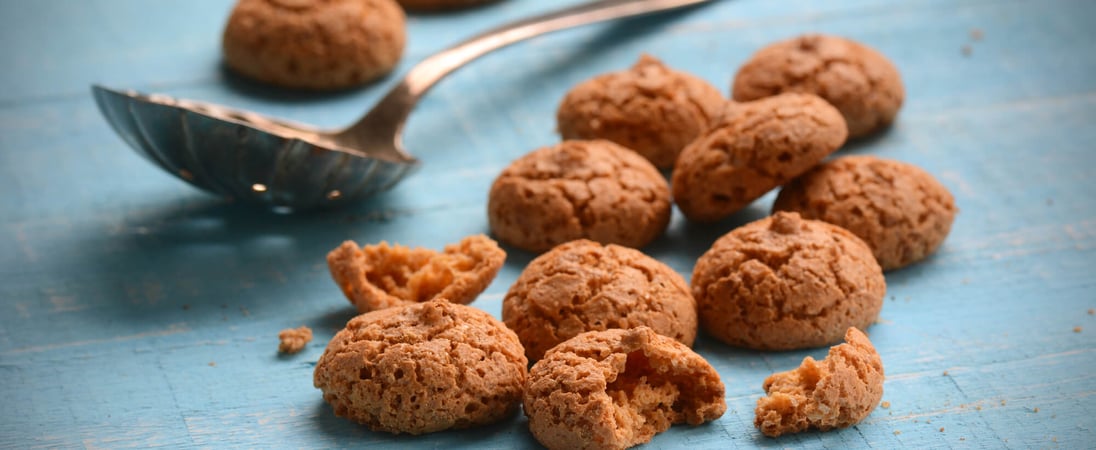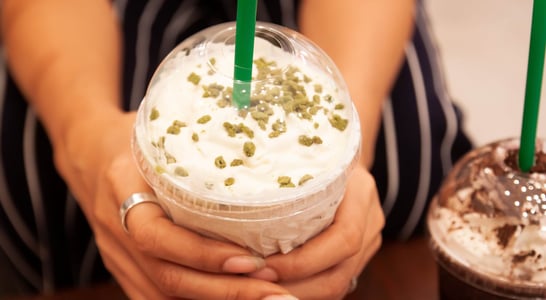
National Biscotti Day
Put together your own dream recipe for biscotti and add this delicious, crunchy treat to your repertoire—or just go get some at a bakery or store, that’s fine too.
Chocolate Hazelnut, Honey Pistachio, Almond and Lemon Dipped in White Chocolate, Dried Cherry and Almond Biscotti, Biscotti alla Parmigiana, Peppermint Biscotti, Almond and Raisin, these are just a few samples of the absolutely rainbow of flavors you can get Biscotti in.
All of them are the perfect accompaniment to your favorite blend of coffee or a steaming cup of relaxing tea, their double-baked crunch absorbing the myriad of flavors and softening into an expertly textured snack.
National Biscotti Day celebrates these wonderful treats, and reminds you to try a new flavor, or indulge in your favorite.
How to Celebrate National Biscotti Day
The best way to celebrate National Biscotti Day is by putting together your own special recipe for Biscotti and seeing what new variation you can come up with. To that end, we provide you with a very basic recipe you can build on:
Ingredients :
- ½ c Canola Oil
- 1 c sugar
- 3 ¼ cups flour (all-purpose)
- 3 eggs
- 1 T Baking Powder
- 1 T Anise Extract
Directions:
- Start off by preheating your oven to 375 degrees F, and grease a cookie sheet or line it with parchment paper.
- Then, in a medium bowl, mix the eggs, sugar, oil, and the Anise extract until it’s blended together.
- Combine the baking powder and the flour and add the egg mixture until you have a heavy dough.
- Split it in two and make a roll the same length as your cookie sheet, press it down to ½ thickness, and place in the preheated oven.
- 25-30 minutes later it should turn a nice golden brown, take it out and let it rest on a wire rack.
- When it’s cold enough to handle cut it into ½ in thick slices and put back on the baking sheet.
- Then let it cook for an additional 6-10 minutes until lightly toasted. Voila, your own biscotti!
You can build on this recipe by adding lemon juice, orange juice, frosting them, adding nuts or fruit, anything you can think of. National Biscotti Day encourages you to be adventurous and try something new!
History of National Biscotti Day
Biscotti are almond biscuits that originate in Prato Italy, they are the result of a process that leaves them delicious and crunchy, twice-baking.
Their firm crispy texture is one of the reasons they’re traditionally served in Vin Santo, a sweet white dessert wine.
Biscotti were the result of a process that was used to help preserve food for a long time, and thus twice-baked foods were often taken on long journeys and wars by Roman Legions. Since then they’ve been a popular part of the dietary culture of Italy, and eventually spread across the world finding a new home in coffee shops.
The cooking process starts with a barely wet dough of flour, sugar, eggs, and unskinned/unroasted almonds, without any form of yeast or fat.
This dough is baked once in a slab the shape of the biscotti, and then baked again after being sliced into the signature shape known to the end customer.
While the traditional recipe involves almonds, as mentioned above, they can also be made with pine nuts, walnuts, dry fruits like raisins, or just about any low-moisture ingredient you can conceive of. It’s from these origins that the humble Biscotti comes.
National Biscotti Day FAQs
Did ancient Roman soldiers carry biscotti during their campaigns?
Yes! The original version of biscotti, known as panis biscotus, was a staple food for Roman soldiers.
The twice-baked method removed moisture, making the biscuits last for weeks, even months, without spoiling.
These dry, crunchy biscuits provided essential sustenance on long marches and naval expeditions. When the Roman Empire fell, the tradition faded, but it was revived during the Renaissance in Tuscany.
The modern almond version we recognize today emerged in Prato, Italy, centuries later. Even now, biscotti’s long shelf life makes it a favorite travel snack.
Why are biscotti traditionally paired with Vin Santo wine in Tuscany?
In Tuscany, dipping biscotti in Vin Santo isn’t just a tradition—it’s a flavor-enhancing technique.
Vin Santo is a sweet dessert wine, and when paired with dry, crunchy biscotti, it softens the texture while enriching the flavors of toasted almonds and caramelized sugar.
Historically, this pairing was popular in 14th-century monasteries, where monks sipped Vin Santo and ate biscotti during celebrations. Today, it’s a must-try experience in Italian trattorias.
Unlike coffee, which quickly saturates biscotti, Vin Santo coats them lightly, creating a balanced taste.
Are there any festivals dedicated to biscotti in Italy?
While there isn’t a single festival solely dedicated to biscotti, many Italian food festivals celebrate them.
In Prato, where the famous cantucci (a type of biscotti) originated, food fairs often highlight this treat alongside other Tuscan specialties.
During Siena’s Palio horse race, bakeries sell biscotti dipped in wine to honor the medieval tradition. In December, Italian Christmas markets offer regional variations, including pistachio and chocolate-studded versions.
While biscotti aren’t the star of a festival, they remain an integral part of Italian culinary celebrations.
What are some unusual ingredients used in modern biscotti variations?
While almonds are the classic ingredient, modern biscotti flavors have evolved dramatically.
In Italy, saffron-infused biscotti are found in Milan, reflecting the region’s love for the spice. Sicilian versions sometimes contain citrus zest and pistachios.
Outside Italy, unique adaptations include matcha-flavored biscotti in Japan and cranberry-walnut varieties in the U.S. Some chefs experiment with black pepper or rosemary for a savory twist.
Chocolate-dipped biscotti gained popularity in the 20th century, but traditionalists argue it alters the biscuit’s authenticity.
Is there a connection between biscotti and Jewish culinary traditions?
Yes! The Jewish treat mandelbrot closely resembles biscotti. Both are twice-baked and have a crunchy texture, but mandelbrot is slightly softer because it contains more fat, usually oil or butter.
Mandelbrot means “almond bread” in Yiddish, and it originated in Eastern Europe.
Traditionally, Jewish families enjoyed it during Sabbath and holidays. Italian Jews also adopted biscotti-style baking for pavese, an almond-based Passover treat.
Today, many Jewish bakeries in the U.S. sell mandelbrot as a nostalgic, biscotti-like delicacy.
How do different Italian regions put their own spin on biscotti?
Italy’s love for biscotti varies by region. In Tuscany, cantucci are classic, made with almonds and served with Vin Santo.
In Rome, tozzetti use hazelnuts instead of almonds. Sicily’s quaresimali biscotti, traditionally eaten before Easter, are often flavored with orange zest and cinnamon.
In Liguria, biscotti della salute are softer, almost like sweet rusks. Meanwhile, in Calabria, biscotti might include anise or fennel seeds for a licorice-like twist.
Are there any superstitions or myths associated with biscotti?
There are no direct biscotti superstitions, but Sicily has ossa di morto (“bones of the dead”)—a twice-baked biscuit made for All Souls’ Day.
Legend says they represent the bones of ancestors, and eating them brings good luck.
Some believe that biscotti’s crunchy texture symbolizes resilience, making them a fitting treat for special occasions.
In medieval times, some Italian households saw biscotti as a sign of prosperity because almonds were expensive and a symbol of good fortune.
How did biscotti evolve from a practical food to a gourmet treat?
Biscotti started as survival food for soldiers and travelers. In the 16th century, Tuscany’s Antonio Mattei refined the recipe, making it more flavorful.
Over time, bakers experimented with different nuts, spices, and even liqueurs.
In the 20th century, gourmet variations emerged, often dipped in chocolate or infused with coffee flavors. Today, high-end bakeries produce artisanal biscotti, sometimes using exotic ingredients like saffron or dried lavender.
Though originally a simple, no-frills biscuit, biscotti now symbolize Italian culinary craftsmanship.
What role did Antonio Mattei play in popularizing biscotti?
Antonio Mattei, a 19th-century pastry chef from Prato, perfected the modern biscotti recipe.
Before him, biscotti were mainly a peasant food, dry and plain. Mattei’s version introduced a delicate balance of almonds, sugar, and eggs, making them more flavorful.
His bakery, Biscottificio Mattei, still operates today, using the same recipe from 1858. He even won awards in international exhibitions, spreading the fame of Prato’s biscotti beyond Italy.
How are biscotti incorporated into savory dishes in Italian cuisine?
Biscotti aren’t just for dessert! In Catalonia, they’re used in sauces for calçots (grilled green onions).
In parts of Italy, biscotti crumbs thicken stews and sauces, similar to how bread crumbs are used.
In coastal Baix Llobregat, biscotti are even part of a dish featuring duck stuffed with turnips. These creative uses show how biscotti can go beyond the coffee cup.
Need some inspiration?
Check out these videos for some extra inspiration in getting involved!
Also on ...
View all holidaysNational Coffee Day
A beverage that makes the world go round! The aroma, the taste, the energy boost — a good cup of coffee can make every day a little brighter!
International Day of Awareness of Food Loss and Waste
Minimizing excess and valuing sustenance, addressing this global challenge preserves resources and ensures nourishment for all, fostering a responsible legacy.
National Starbucks Day
Aromatically invigorating and a great way to kickstart your day, this popular beverage is an essential part of daily routines for many.




